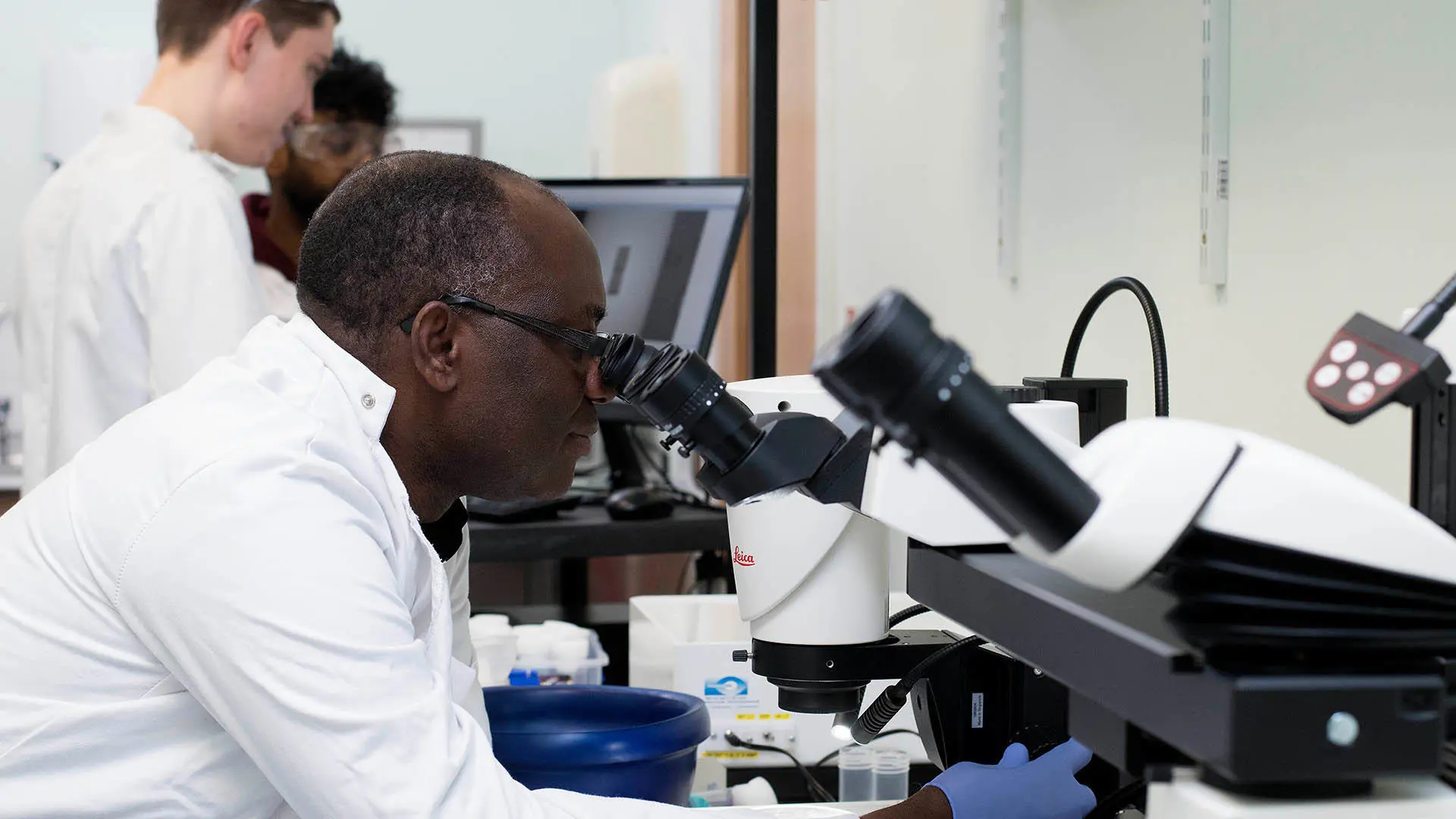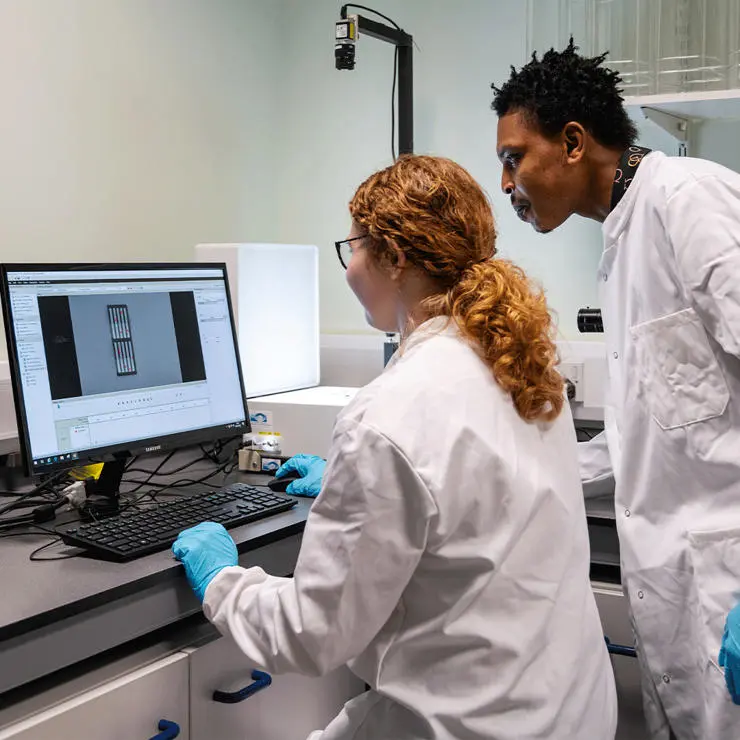The CIRCUITS laboratory consists of a general-purpose laboratory that is centrally placed within the suite, providing access to a series of specialist rooms immediately adjacent to this space. These consist of laboratories that are equipped for behavioural research including: research with fruit flies (Drosophila melanogaster); molecular neuroscience research, such as immunohistochemistry and fluorescent imaging; neuroendocrine work to investigate markers of stress, inflammation and other biochemicals. We also are equipped for psychophysiology and virtual reality work in human participants as the lab also houses a small psychophysiological testing facility.
The general-purpose laboratory can be used for teaching small groups specialist laboratory techniques, for student led collaborative research projects and for staff research. Adjacent to this central space are a few smaller specialist laboratories. These consist of facilities for fruit fly husbandry under differing environmental conditions (eg different temperatures), a behaviour room containing a rig setup to monitor and analyse behaviour; with a Basler camera to film fruit flies’ in novel arenas under differing conditions (both environmental, physiological and pharmacological) and computerised software to analyse the resultant behaviours (Noldus.com: Ethovision 14TX- (tracksys.com)).
There is also a histology laboratory containing equipment for fluorescent imaging work, such as: a state of the art Leica fluorescent imaging microscope, a dissection microscope with a facility for two people to view the dissection (used to teach dissection techniques to staff and students) and several other dissection microscopes. These fluorescent imaging facilities can be configured to investigate an array of topics, including: the expression of interneurons in mouse models of disease states as well as to investigate the expression and distribution of various neurochemicals in fruit fly brains.
We also have facilities to take endocrine measurements from blood, saliva and other tissues to allow investigation of the stress responses mediated by the hypothalamic-pituitary-adrenal (HPA) axis or the sympathetic-adreno-medullary axis (SAM) as well as other biochemicals (state of the art Enspire plate readers (Perkin Elmer.com) for UV/Vis, IR and fluorescent light; centrifuge, class two cabinet). Alongside this we are also equipment for human psychophysiology measurement (Biopac MP160 and cardiology equipment such as the Niccomo (medis.com) under varying conditions including in virtual reality environments (Occulus rift).
Currently we have interests in translational neuroscience research in areas such as behavioural anxiety, ageing and the effects of global warming, as a result of climate change, in fruit flies. This work involves fluorescent imaging investigating the pathways in the fruit fly brains linked to these differing behavioural paradigms. We also have work investigating the reward pathways in animal models of disorders, such as autistic spectrum disorder, epilepsy and frontotemporal dementia. These models are being investigated using mouse brain slices, advanced electrophysiological techniques, such as multielectrode array recordings and advanced multi-labelling immunohistochemical techniques.
There is also an interest in human psychophysiology and neuroendocrine responses such as salivary cortisol and markers of inflammation such as cytokines in response to differing behavioural and pharmacological paradigms.


